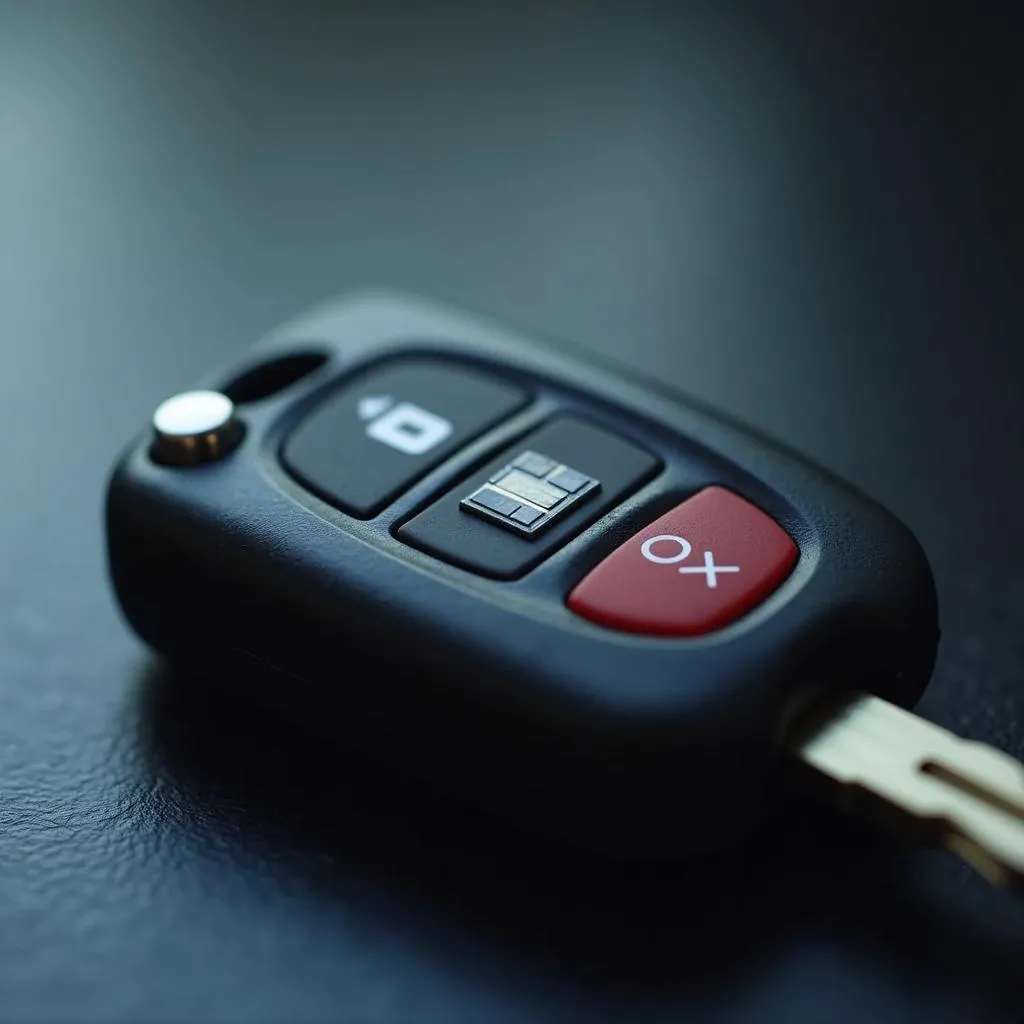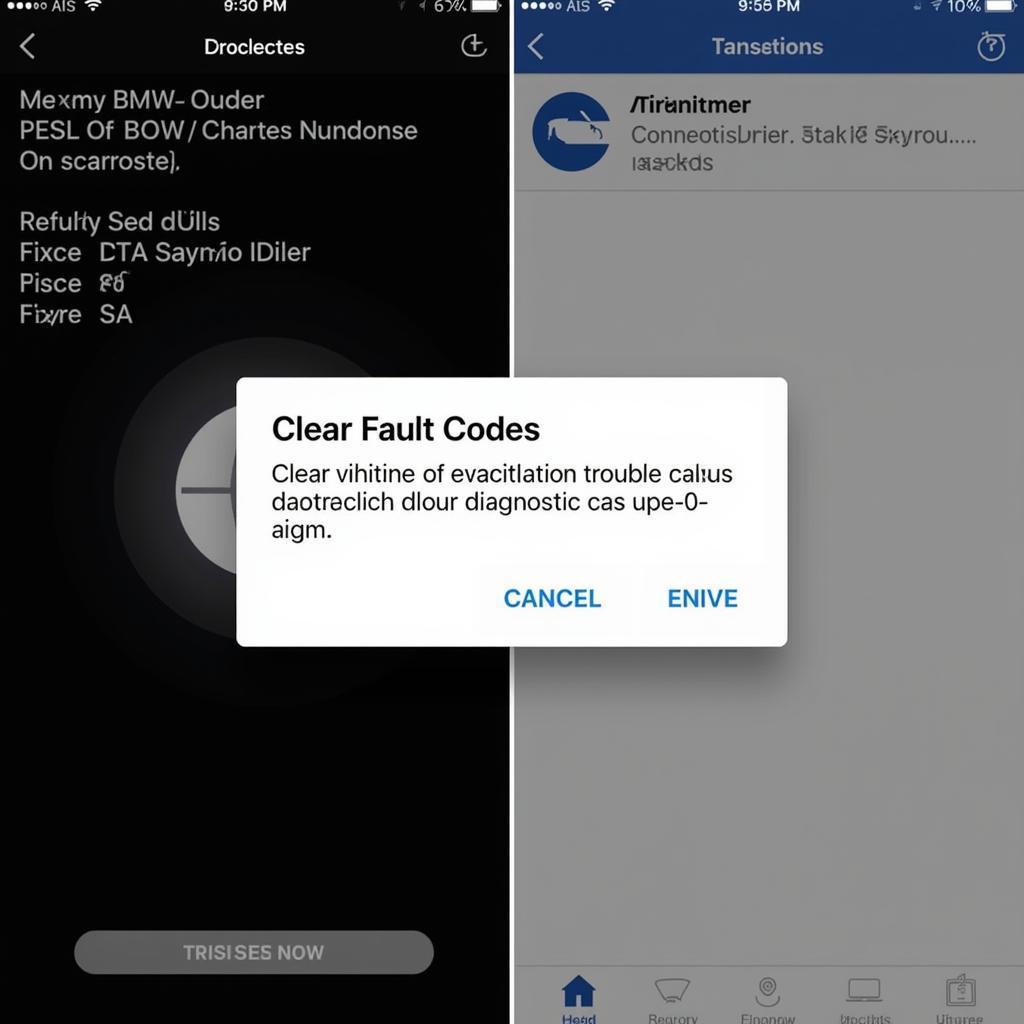You’re driving your BMW when suddenly, a yellow brake warning light illuminates on your dashboard. This light often indicates worn brake pads. It’s a concerning sight, but don’t panic. The question most drivers have is, “How long can I drive with the brake pad warning light on?” Let’s delve into this common BMW concern.
Understanding Your BMW Brake Pad Warning Light
BMW vehicles are equipped with a sophisticated sensor system that monitors brake pad wear. When the brake pad material wears down to a predetermined level, the sensor triggers the warning light on your dashboard. This serves as an early alert system, giving you time to address the issue before it escalates into a safety hazard.
Expert Insight:
“Many drivers mistake the brake pad warning light for a brake failure signal. While it’s crucial to address the warning promptly, it’s not an immediate emergency. The warning light is your BMW’s way of saying, ‘It’s time for some brake maintenance,’ not ‘Pull over immediately!'” – Mark Stevenson, Senior Automotive Technician
Factors Affecting Brake Pad Lifespan
While the appearance of the warning light signals the need for a brake job, the remaining driving distance can vary greatly.
- Driving Habits: Aggressive driving with frequent hard braking will wear down brake pads faster than a gentler driving style.
- City vs. Highway Driving: Frequent stop-and-go city driving puts more strain on brakes compared to highway driving.
- Brake Pad Quality: High-quality brake pads are designed for longevity and can withstand wear and tear more effectively.
How Long Can You Drive with the Brake Pad Warning Light On?
It’s difficult to put an exact mileage on how long you can drive with the warning light activated. However, a general rule of thumb is to consider it a warning to schedule a brake inspection within 1,000 miles or less.
Important Considerations:
- Ignoring the Warning Light: Continuing to drive with significantly worn brake pads can damage the rotors, leading to costly repairs. In extreme cases, it can compromise braking performance, putting you and others at risk.
- Changes in Braking Performance: If you experience any unusual noises, vibrations, or a spongy brake pedal feel, seek immediate attention from a qualified mechanic.
Resetting the BMW Brake Pad Warning Light
how to reset brake pad warning on bmw
After replacing your BMW’s brake pads, the warning light needs to be reset. This can sometimes be done manually, but many newer BMW models require a specialized diagnostic tool to reset the sensor.
Preventing Premature Brake Pad Wear
Extending the life of your brake pads and ensuring optimal braking performance involves a proactive approach:
- Smooth Braking: Anticipate stops and coast to a halt whenever possible.
- Lighten the Load: Carrying excessive weight in your BMW puts additional strain on the braking system.
- Regular Maintenance: Adhere to your BMW’s recommended brake inspection schedule as outlined in your owner’s manual.
FAQs: BMW Brake Pad Warning Light
Q: Can I reset the brake pad warning light myself?
A: While some older models allow manual resets, newer BMWs typically require a diagnostic tool. Consult your owner’s manual or a qualified technician.
Q: How much does a BMW brake job cost?
A: Costs vary depending on the model, labor rates, and whether rotors need replacing. Get a quote from a reputable mechanic for an accurate estimate.
Q: What are the signs of worn brake pads besides the warning light?
A: Squealing or grinding noises during braking, vibrations in the brake pedal, and a longer stopping distance are all indicators.
Don’t Ignore the Warning: Prioritize Your BMW’s Brakes
Your BMW’s brake system is paramount to your safety. While the brake pad warning light doesn’t signal an immediate emergency, it should never be ignored. Addressing the issue promptly ensures optimal braking performance and prevents potentially costly repairs down the line. Remember, a little preventative maintenance goes a long way in keeping you safe on the road.


